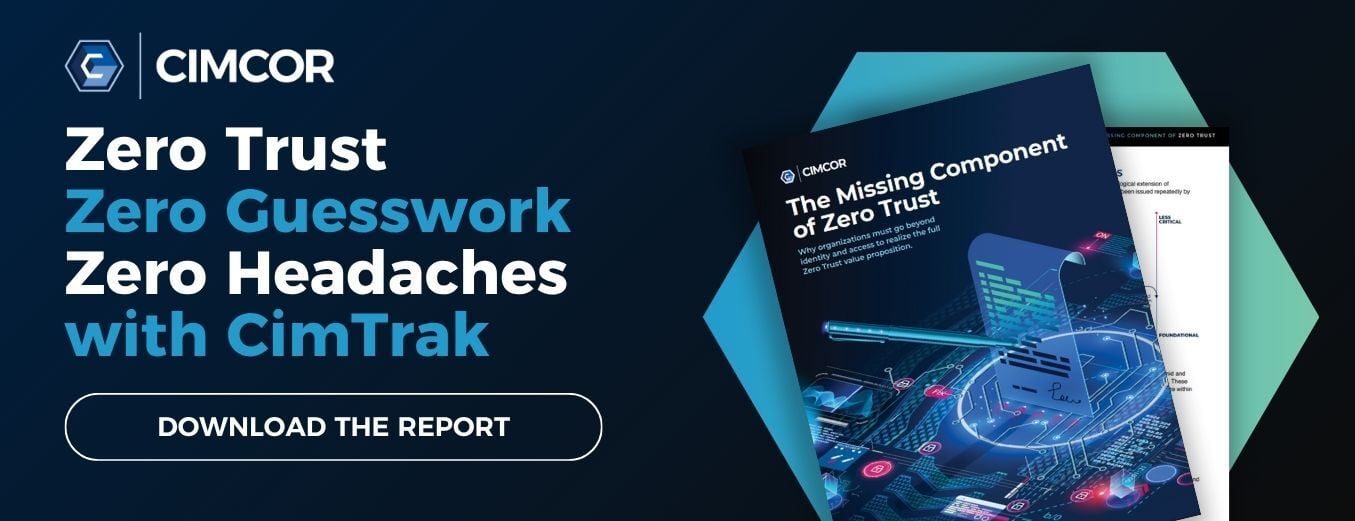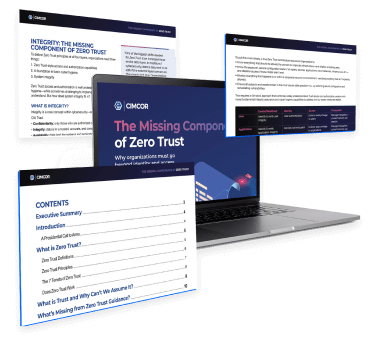Micro-segmentation. Zero Trust. Fine-grained access control. Role-based access control.
The cybersecurity world is filled with options for security architecture solutions… so how can you know which solution is going to keep your organization’s data the most secure?
Most IT professionals will agree that the root of most security protocols is appropriate access. Ensuring that staff has the access they need to perform their job duties efficiently while not giving them unnecessary access that can open your organization up to security breaches can be a delicate balance. This is where micro-segmentation, Zero Trust, and more come into play.
Let’s cover the basics of micro-segmentation, discussing the benefits, key elements, and steps to implement a micro-segmentation Zero Trust solution in your organization.
Micro-Segmentation, Zero Trust: What’s The Difference?
The concepts of micro-segmentation and Zero Trust are so intertwined that they are often confused as being the same. Before we delve deeper into the benefits and details of micro-segmentation, let’s first establish some basics.
What is micro-segmentation? Micro-segmentation refers to the practice of separating data and application access by individual role or user needs. In short, micro-segmentation enables you to provide each user with only the access they need to perform their job duties.
On the other hand, Zero Trust is a complete model of cybersecurity. Zero Trust Architecture is based on the practice of denying implicit trust to any user in your network. Rather than trusting users to access only the data and applications, they need to perform their work. Zero Trust restricts access for all users, assuming every access point is a breach until it’s proven to be legitimate rather than assuming there is no breach until one is detected.
Micro-segmentation and Zero Trust are not identical. However, they are related in that micro-segmentation is a vital step in implementing a Zero Trust Architecture.
Benefits of Micro-Segmentation
Micro-segmentation can be a challenge to implement, but it provides your organization with many benefits related to cybersecurity.
Limits Destructive Capabilities
The first benefit of micro-segmentation is that it limits the destructive capability of a breach. Consider a social engineering attack. One of your low-level employees unknowingly provides their login information to a cyber-criminal. Suppose that employee has wholesale access to your organization’s data and applications. In that case, the criminal will be able to wreak more havoc than they can if they have access only to a small subset of data necessary for their direct job duties.
Makes Detection Easier
Micro-segmentation also makes it easier to detect a breach in your network. Limiting the number of users with access to specific data makes it easier to determine the origin of a breach in your network. As a result, to research a breach, you only need to review the users who have access to the data that was accessed improperly.
Additionally, you can keep a closer eye on alerts related to users requesting access to data or applications they do not have permission to access. Repeated access requests from the same user may indicate that the user’s access is compromised.
Increased Visibility
Lastly, micro-segmentation gives you clear visibility into which users have access to various data and applications within your organization. When your access is granted via micro-segmentation, you can see access at a glance and control who can see, change, and export various data at a very fine, grain level.
Elements of Micro-Segmentation
Micro-segmentation consists of three primary elements: Fine-grain access policies, pinpointed security controls, and access management identities. Let’s discuss all three in more detail.
- Fine-Grain Access Policies:
When implementing micro-segmentation, you will default to least privilege. This means that you will grant users the bare minimum access they need to complete their work. Fine-grain access policies enable you to provide your users with only the specific access they need without inadvertently granting them permission to access information irrelevant to their job duties.
- Pinpointed Security Controls:
Set up perimeters around each segment of permissions outlined by your micro-segmentation policies. Setting up these micro-perimeters has many advantages over setting up one large-scale perimeter around your entire network. With these pinpointed security controls, you can tailor your security measures to fit each micro-segment's types of data and applications.
- Access Management Identities:
Essentially, this element brings the first two elements of micro-segmentation together. You’ll set up your security processes to check for the fine-grain access granted to each user, then verify their identity to pass them through the pinpointed security controls set up in the second element.
Steps to Implement Micro-Segmentation
Armed with an understanding of the benefits and essential elements of micro-segmentation, you are now ready to map out your implementation plan. You can implement micro-segmentation in your organization by following four simple steps.
-
- Map Your Network
Your first step is to map out your entire network. You’ll need a complete picture of all your data and applications to segment your user base properly. You’ll also want to ensure you avoid accidentally boxing users in by denying them key access in one system that they need to access functionality in an interdependent system. The more tools and applications you have in your tech stack, the more complicated this stage will be. - Identify Protect Surface(s):
What is a protect surface? Your protect surface includes any data, applications, or devices you need to secure. When you define your protect surface, you establish the various levels of data you need to keep secure. This practice allows you to concentrate your controls as close to the perimeter of those elements as possible. - Segment Users:
With a comprehensive understanding of your network's moving pieces and the data and applications you need to protect most, you’re ready to begin the segmentation process. Divide up your user population with the goal of securing each protect surface you’ve identified in step 2 from any unauthorized or unnecessary access. - Implement Next-Generation Firewalls:
Lastly, you will need to implement Zero Trust measures such as next-generation firewalls to ensure full protection from unauthorized access. - Implement System Integrity Assurance Software:
You can also implement a File Integrity Monitoring and System Integrity Assurance solution like CimTrak at this stage to help identify breaches more quickly and revert unauthorized data changes. This will enable you to identify unexpected changes to your firewalls, servers, and other key assets in your IT infrastructure.
- Map Your Network
How To Implement Micro-Segmentation, Zero Trust, and Security For Your Business
Your organization needs effective data security measures.
Micro-segmentation helps you streamline operations for staff across your various platforms and technical solutions while maintaining access control at a fine-grained level. However, when it comes to keeping your data secure, access is only the first hurdle you have to overcome.
Monitoring your Zero Trust environment can be tedious, forcing your IT staff to comb through thousands of benign alerts per day in hopes that they will manage to catch the alerts that really matter. Implementing a file integrity monitoring and system integrity assurance platform like CimTrak helps manage it all effectively.
CimTrak combs through your thousands of changes, both good and bad, on your behalf, automatically rolling back low-level unauthorized changes and only pinging your staff with the alerts that genuinely need their attention.
What info are you missing before getting started with micro-segmentation and a Zero Trust network architecture? It’s crucial to know what the common challenges of Zero Trust include. Explore the Missing Components of Zero Trust to determine exactly what you need to know before moving forward with a Zero Trust-based solution.
Tags:
Zero Trust
August 4, 2022




